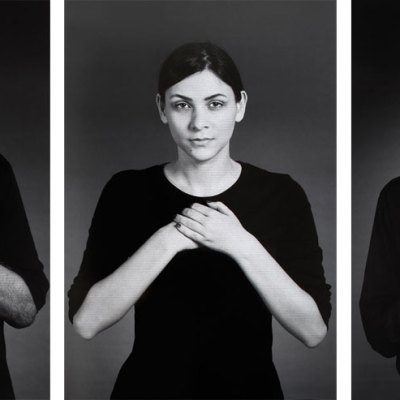On 15 July, the day after the historic Iranian nuclear deal was reached, the Foreign Secretary Philip Hammond told the House of Commons that ‘contacts with Iran will now be critical, opening the country up through trade and investment, travel, people-to-people contacts and Iranian students travelling abroad.’ One salient feature missing from Hammond’s hopeful survey of the new geopolitical landscape was the culture industry, an omission all the more surprising given the global recognition accorded to Iranian musicians, artists and filmmakers during three decades of relative isolation.
In recent years, there have been exhibitions at institutions such as the Met, the Guggenheim and the Saatchi Gallery, while figures such as Monir Shahroudy-Farmanfarmaian and Parviz Tanavoli have been presented as serious artists on a global scale. Those of us living in the West stand to gain a fuller sense of the cultural contexts of contemporary Iranian art, perhaps supplied by the artists themselves, now that visas will be considerably easier to obtain. At the very least, international collections of Iranian art will flourish anew. Maryam Eisler, co-chair of the Tate Middle East and North Africa acquisitions committee, explained how difficult the situation has been. ‘The visual arts have been the principal medium of cultural exchange under severely testing international climates, so the lifting of sanctions will encourage an increase in this exchange, especially as it relates to the US where any export of Iranian goods including art has been restricted.’
Cultural diplomacy is, however, an exhausting and often aesthetically compromising mission. How can an artist be expected to represent her immediate milieu, let alone her generation? How can a work of art address the fullest range of its author’s concerns when it is presented as part of an exhibition that might insist upon a fragile spirit of amity and togetherness?
Some of the issues attending these questions are generational. Most Iranians were born after the 1979 Revolution: they have different dreams, different nightmares. Younger artists might not be burdened by the task of introducing the more obvious nuances of their culture to an informed Western audience, who will already be familiar with the work of Shirin Neshat [read our interview with the artist here] or Abbas Kiarostami. But it is surely ironic that Hammond was acknowledging the benefits of Iranian students travelling abroad when his government has committed itself to making it harder for international students to extend visas for vital work and training opportunities. The Obama administration has at least made new provisions for Iranian students in the United States.
The nuclear deal was greeted with relief rather than unqualified joy by most Iranians living abroad. President Rouhani was elected on a platform of greater transparency and a moderation of former attitudes at home and abroad, the hopes of previous elections having been tempered by the experience of the Green Movement on the one hand and the collapse of Syria on the other. What this means for the country’s artistic community is unclear. The deal will not guarantee the expressive freedoms that are fundamental to a lively and various art scene, but perhaps the future quality and aesthetic integrity of Iranian art can serve as some kind of index for the profounder benefits of openness and exchange as they are enjoyed by its society as a whole.
Lead image: used under Creative Commons licence (CC BY-SA 2.0; original image cropped)



